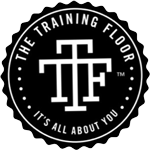How to read a nutrition label
Eating right is not about counting calories, fat grams, carbohydrates, or anything else; it’s about enjoying a balanced diet that includes a wide variety of healthy foods. But that doesn’t mean you shouldn’t pay attention to the Nutrition Facts panel on packaging. Understanding this information will help ensure that you are getting enough daily nutrients while striving toward your health and weight-loss goals. Since deciphering the Nutrition Facts panel can be a bit tricky, we created this helpful cheat sheet that you can take with you the next time you hit the grocery store.
1. Serving Size and Servings per Container. This is the first thing to look at when you are scanning a Nutrition Facts panel. Serving sizes are standardized by product type to make it easier to compare similar foods; they are provided in familiar units, such as cups or pieces, followed by the metric amount (for example, number of grams). It’s important to be aware of how many servings there are in a package. Many products that look like they contain 1 serving actually contain more than that in a single package.
2. Calories. Calories are a measure of how much energy you get from a serving of the product. While we don’t count calories on the South Beach Diet, we do want you to be aware of them because they do count. As suggested above, be sure to look at the number of servings in a package to figure out total calories per package.
3. % Daily Value. On the right side of the panel is a column that lists % Daily Value (DV) for each nutrient based on a diet of 2,000 calories a day, as recommended by public health experts. Your DV may need to be higher or lower depending on your caloric needs. You can use the %DV as a guide for evaluating nutrients and whether or not they are contributing minimally or significantly to your daily recommended allowance. A good rule of thumb: 5%DV or less is low for all nutrients and 20%DV or more is high for all nutrients.
4. Total Fat. This section is broken down into saturated and trans fat content. Manufacturers are not required to list unsaturated fats; however, they are included in the total fat calculations. Be aware that a label can say 0% trans fats if it contains less than 0.5 gram per serving — so be sure to check for hydrogenated or partially hydrogenated oils (which indicate the presence of these bad fats) in the ingredients list.
5. Cholesterol and Sodium. While the South Beach Diet does not set absolute limits on cholesterol or sodium, you should discuss your situation with your own physician, particularly if you have high cholesterol or high blood pressure and are salt-sensitive. You may be shocked by how much sodium and cholesterol many processed foods contain.
6. Total Carbohydrate (Dietary Fiber, Sugars). Total carbohydrate is the heading that lists total grams of dietary fiber and sugars, with the individual subcategories of dietary fiber and sugar following. Getting plenty of fiber is very important (25 to 30 grams daily is optimal), so pay close attention to this section of the panel. When choosing whole-grain breads, for example, select those that contain at least 3 grams of fiber and no more than 3 g of sugar per serving. When it comes to sugars, be aware that this number represents the sum of sugars that occur naturally in foods, like lactose and glucose, as well as added sugars (corn syrup, dextrose, high-fructose corn syrup, and honey are just a few of the names added sugars go under). Take a hard look at the ingredients list all the way through to check for these added sugars.
7. Vitamins and Minerals. Manufacturers are required to list the percentage of the DV of vitamin A, vitamin C, calcium, and iron supplied by a serving of food. Listing other vitamins and minerals is voluntary, unless a claim is made about the nutrient or they are added to supplement the foods (as in breakfast cereals that supply 100% of your daily need for various vitamins and minerals).
